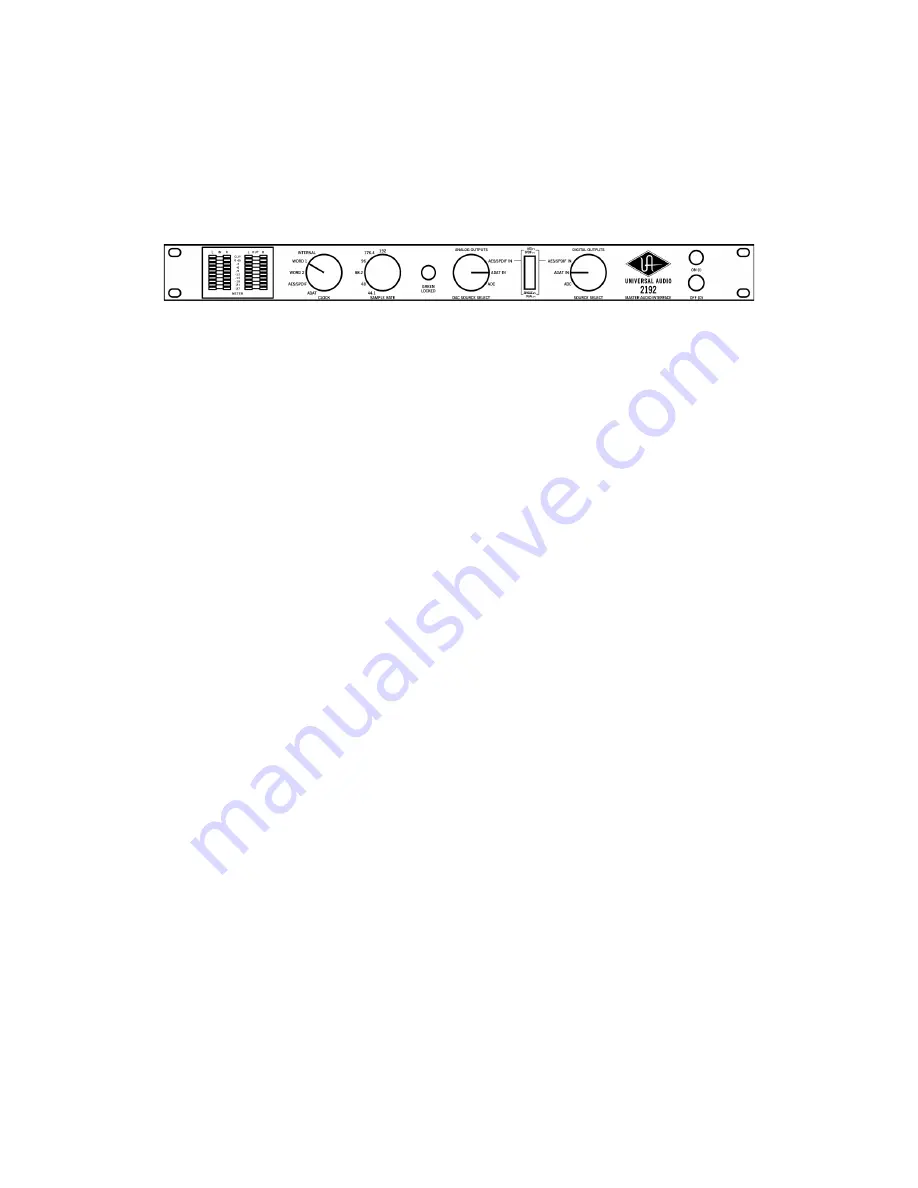
Applications: Transcoding
__________________________________________________________
- 24
-
Transcoding Using Alternate Clock
In this configuration, the 2192 is synchronized to an external clock master. The digital audio source
device can be synchronized to the same clock, or to the 2192.
To perform transcoding while using an alternate source clock:
1.
Using the appropriate digital cable, connect the digital output from the external digital audio
source device to the desired 2192 digital input.
2.
Using the appropriate digital cable(s), connect the 2192 digital output(s) to the digital
input(s) on any external device(s) that will receive the transcoded digital audio signal.
3.
Using the appropriate digital cable, connect the digital output from the external device that is
generating the digital clock signal to the desired 2192 digital input.
4.
Set the 2192 Clock knob to specify the digital input connected to the digital clock source
(Word 1, Word 2, AES/SPDIF or ADAT). If the Clock knob is set to AES/SPDIF, use the AES/SPDIF
switch to specify AES/EBU or S/PDIF.
5.
Set the 2192 Digital Outputs knob to control to specify the digital input that the digital audio
source signal is connected to (AES/SPDIF or ADAT). If the Digital Outputs knob is set to
AES/SPDIF, use the AES/SPDIF switch to specify AES or S/PDIF.
Note that you cannot clock to
S/PDIF while listening to AES/EBU or vice versa
.
6.
Set the external master clock device to transmit digital clock.
7.
Set the digital audio source device to transmit digital audio and to synchronize to either the
external master clock or to the 2192.
Transcoding is performed only when the 2192 is locked (the external clock must be running) and
digital audio is present at the digital input. The Locked lamp glows green when the 2192 is
successfully synchronized to an external clock source.






























